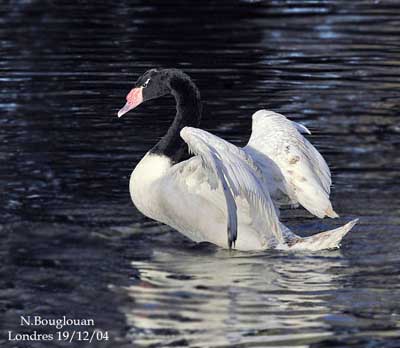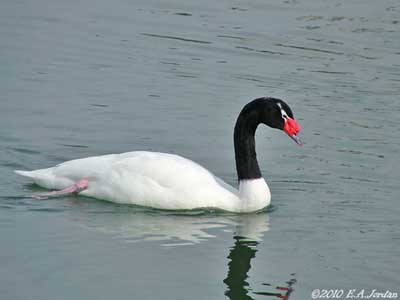
Fr: Cygne à cou noir
All : Schwarzhalsschwan
Esp: Cisne Cuellinegro
Ital: Cigno collonero
Nd: Zwarthalszwaan
Port: Cisne-de-pescoço-preto
Photographers :
Eduardo Andrés Jordan
MIS AVES – AVES DE ARGENTINA
Photos de Philippe Wolfer
OISEAUX D’ARGENTINE
Nicole Bouglouan
PHOTOGRAPHIC RAMBLE
Text by Nicole Bouglouan
Sources :
HANDBOOK OF THE BIRDS OF THE WORLD vol 1 by Josep del Hoyo-Andrew Elliot-Jordi Sargatal - Lynx Edicions - ISBN: 8487334105
GUIDE DES CANARDS, DES OIES ET DES CYGNES – de Steve Madge - Delachaux et Niestlé - ISBN: 2603013769
Welcome to WhoZoo (Jill Foley)
Wikipedia (Wikipedia, The Free Encyclopedia)
El Zoológico Electrónico (Damisela)
Black-necked Swan
Cygnus melanocoryphus
Anseriforme Order – Anatidae Family
BIOMETRICS:
Length: 102-124 cm
Weight: 6700-3500 g
DESCRIPTION:
The Black-necked Swan is a beautiful waterfowl from the southern half of South America. This is the only swan with black neck.

Adult has white plumage except on head and neck. We can see a narrow white eye line from lores to the rear of the eye.
The bill is dark blue-grey with pinkish-white nail. The bare parts of the face and the knob are bright red. Eyes are dark brown. Legs and webbed feet are red.
Both sexes are similar in plumage, but female is slightly smaller and male has larger knob.
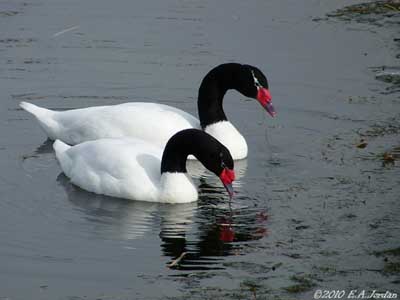
The juvenile has grey plumage, but head and neck are blackish. Knob is absent and appears only at 3 or 4 years. The bill is grey with reddish base. Legs and feet are grey. They have the adult plumage at one year.
VOICE: SOUNDS BY XENO-CANTO
The Black-necked Swan utters weak whistles as contact between them.
This sound is given when the bird flies or swims.
HABITAT:
The Black-necked Swan frequents freshwater marshes, swamps, brackish lagoons, shallow lakes and sheltered coastal bays.
RANGE:
The Black-necked Swan is found in the southern part of South America and Falkland Islands.
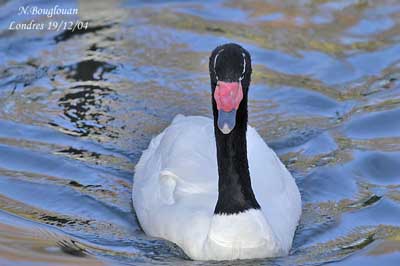
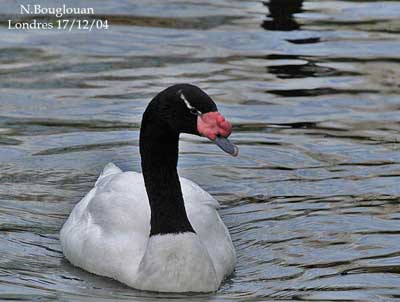
BEHAVIOUR:
The Black-necked Swan is mainly vegetarian, feeding on aquatic plants and algae. It also takes aquatic invertebrates and insects, and fish spawn.
This swan feeds in shallow water, wading and dipping the head under water, and sometimes head and neck.
The food is filtered by the lamellae present on the cutting edges of the bill.
The Black-necked Swan spends most of the time in water. On the ground, it has clumsy gait due to the short legs.
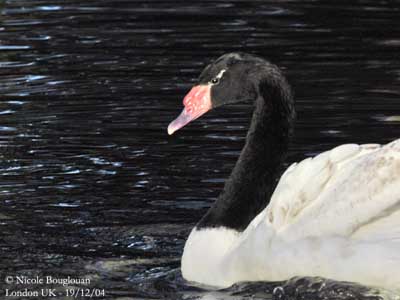
Outside the breeding season, this species is gregarious. But during the nesting period, this swan becomes aggressive, defending strongly the territory and the nest-site by chasing away intruders, but without threat displays as in other swans’ species.
After the breeding season, they may gather in large flocks of several hundreds, sometimes mixed with Coscoroba Swans for moulting between November and February.
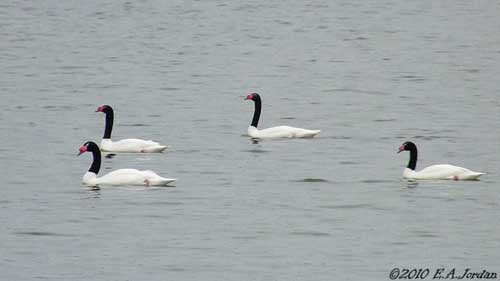
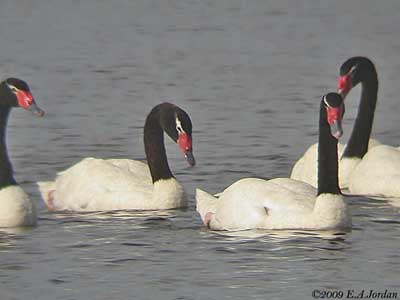
The Black-necked Swan of the Falkland Islands and the northern populations seems to be sedentary, but the birds breeding at higher latitudes descend to lower ones in winter. They move after moulting.
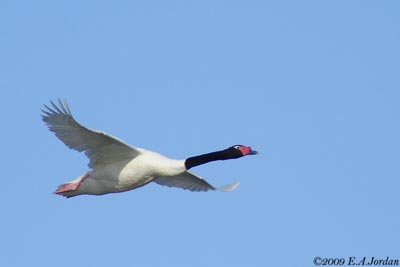
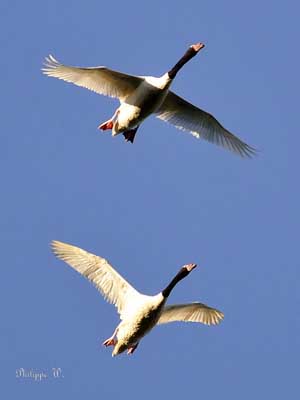
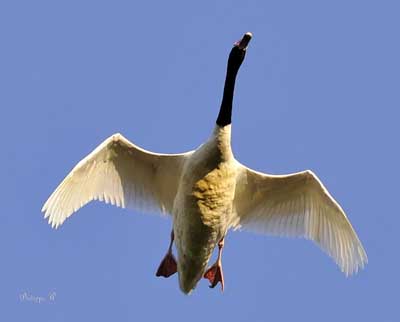
FLIGHT:
The Black-necked Swan has relatively short wings, but its flight is fast and powerful. This swan is able to travel long distances.
It is difficult for this bird to take off and alight, due to its short legs.
REPRODUCTION:
Breeding season starts in early spring.
The Black-necked Swan nest solitary or in loose groups.
The nest is placed in the dense vegetation along the lake shores or on islets. This nest is sometimes a partially floating structure, but more often a large mound of vegetation in reedbeds.
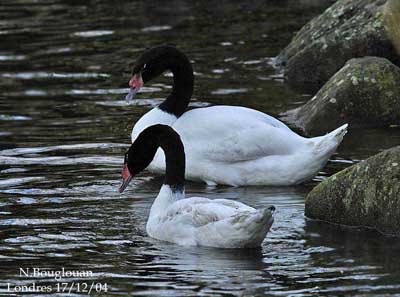
Female lays 3-7 creamy eggs, and incubates during 34-36 days while the male defends the nest-site, chasing away any intruder approaching the nest. The chicks are covered in greyish-white down. They fledge about 100 days after hatching.
The cygnets can be seen on the back of the adults, hidden under the wings while the parents are swimming slowly. Both parents care the young.
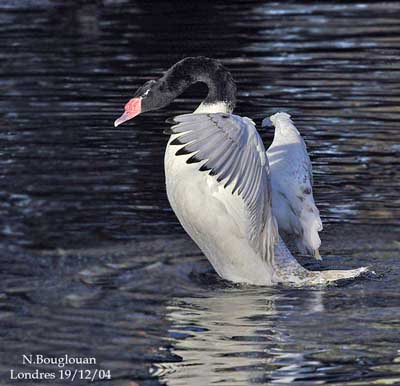
DIET:
The Black-necked Swan feeds on aquatic vegetation such as stonewort (Chara) and pondweeds (Potamogeton), and algae. It also takes invertebrates and aquatic insects.
It feeds by wading in shallow water.
PROTECTION / THREATS / STATUS:
The Black-necked Swan is usually common and widespread, extending its habitat in Chile after eradication by hunting. However, this species is threatened by the drainage of marshy areas.
At this moment, this species is not globally threatened.
